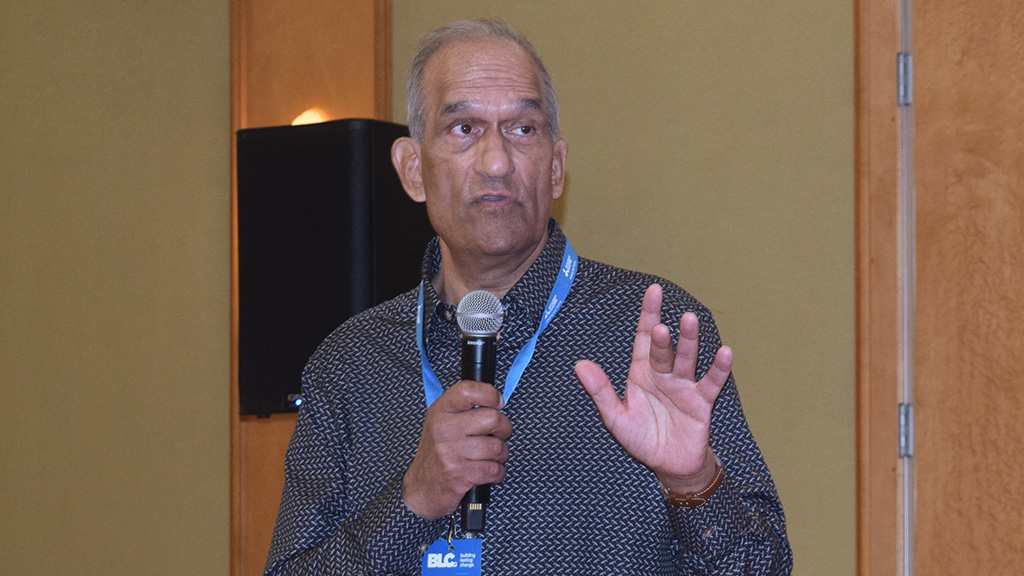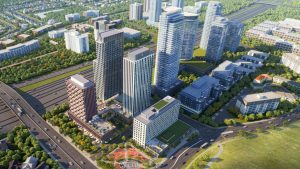There was a unique airing of grievances in Toronto recently.
Delegates attending a Canada Green Building Council seminar on supply chain challenges in the green building sector recently were given the floor to air their frustrations with barriers they encounter, resulting in a respectful public venting session.
For seminar host Chris Henderson, president of Lumos Energy/Indigenous Clean Energy, the give-and-take was further evidence that there is lots of energy coming into the sector, with lots of money to be made.
‘Not moving fast enough’
The dozens of challenges raised are not intractable, he said, but they are difficult.
“We’re dealing with the way we build things, the way we operate buildings, the way we create businesses in the space,” said Henderson, a prominent national commentator on energy transition.
“We’ve got to be more assertive, and we’ve got to move faster.”
“That concerns me, that we’re not doing this fast enough. But what I’m encouraged about is, I see so many young people, people from different diversities and ethnicities and orientations. They just want to get there. And when I see that degree of personal commitment, I’m optimistic.”
The session, billed as Enhancing Business-to-Business Supply Chains for Low-Carbon Buildings in Canada, was held during the CAGBC’s Building Lasting Change conference and presented by the Business Development Bank of Canada.
BDC assistant vice-president Shannon Glenn told the delegates there are 155,000 small and medium-sized enterprises operating in the construction and retrofit sectors and that optimizing the supply chains will be critical to solving their challenges.
Key focuses identified for scaling-up will be the residential sector, along with commercial and institutional retrofits, and electrification, Glenn said.
Glenn said the BDC is moving to address five gaps: disseminating information and awareness; readiness and scaling up; ensuring there are the right skills and right leadership; boosting productivity and automation; and developing capital and consulting networks.
Henderson explained in an interview, “What we’re doing is creating a new decarbonization DNA. And when you’re doing that, you have to fit a lot of different pieces into a jigsaw puzzle. That’s what we heard today in the session. People may think that they got different issues, but no, they are all connected.”
Henderson said the green building sector is at the “awkward teenager” stage.
“That’s what we heard in the session, is that the 44 or so people that were there were expressing different parts of that new economy. So they may be looking at one or two pieces of the jigsaw puzzle, but you need all sitting together to build that new economy.”
Seeking supplies stateside
Issues raised during the input session ranged from problems accessing the data required to undertake an embodied carbon analysis, to finding suppliers with triple-paned windows and balcony doors.
One participant said at the start of one project his firm had to instruct trades and subcontractors on airtightness while another, with an electrical engineering background, experienced a problem finding energy-efficient transformers.
“Now you have to look to the states or another country, and that adds to the cost of the overall project,” he said.
One contributor said she is having difficulty addressing the “transparency of social equity within the supply chain”; another referred to capacity and said it’s difficult to scale up projects; and a third suggested there can be a disconnect between owners, consultants and contractors on pricing of some green products, with owners sometimes “shell-shocked” when they learn a new cost.
“Change ain’t easy, right?” said Henderson. “It’s hard to do. It takes more work, but what I also see is that people realize we’ve got to get there. I think we’re now in the solution finding stage… It’s people saying, ‘OK, we’ve got to figure out change. So let’s get doing that.’”
Priorities to address should be scale and size, Henderson believes.
“We can’t deal with this one house at a time, or one retrofit at a time. I like the idea of multi-residential development.
“And I think if we start to think about scale, there’s more money on the table, there’s more money to be made. And while it’s harder to do, there’s more dividend.”
There is no “magic bullet,” Henderson said, rather it is going to take collaboration and participants rolling up their sleeves to find solutions.
“You can’t be saying, ‘Solve my problem for me.’ You’ve got to be part of the solution.”
Follow the author on X/Twitter @DonWall_DCN.




Recent Comments
comments for this post are closed